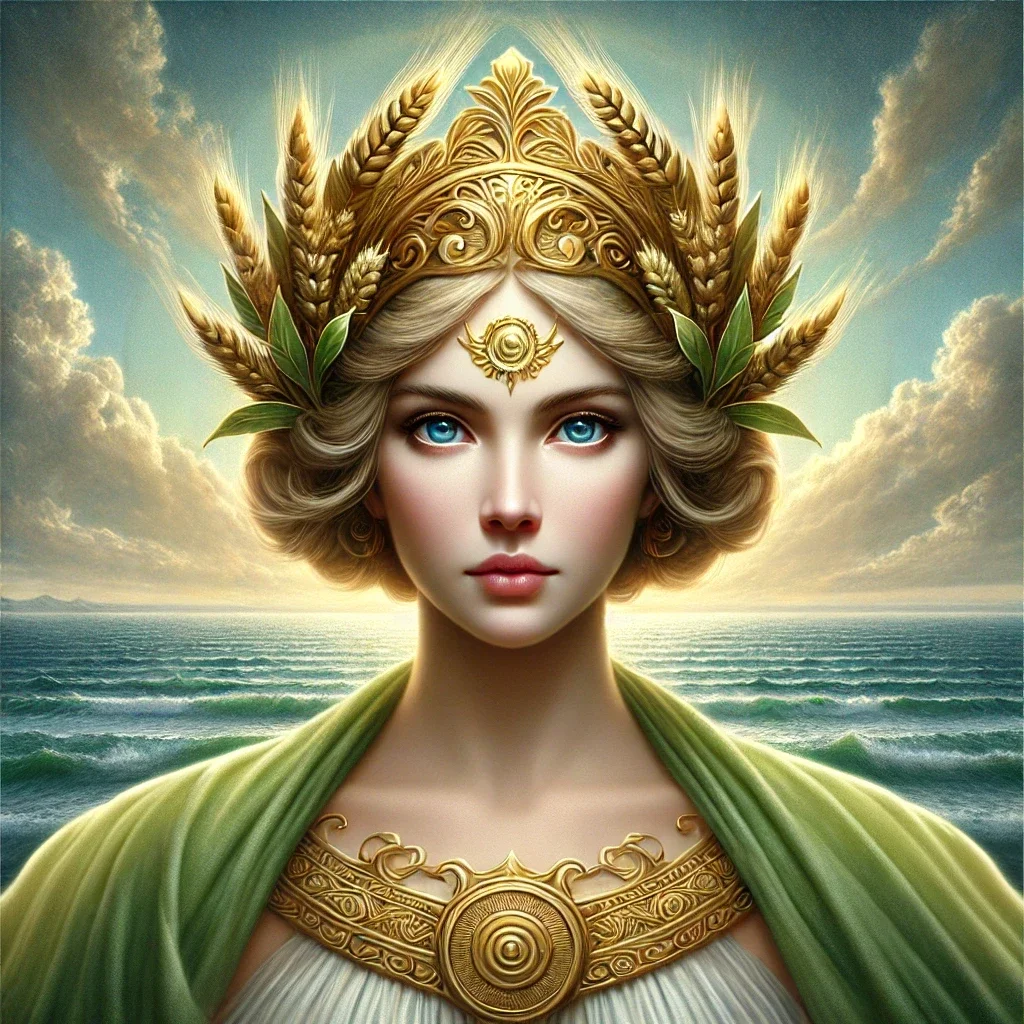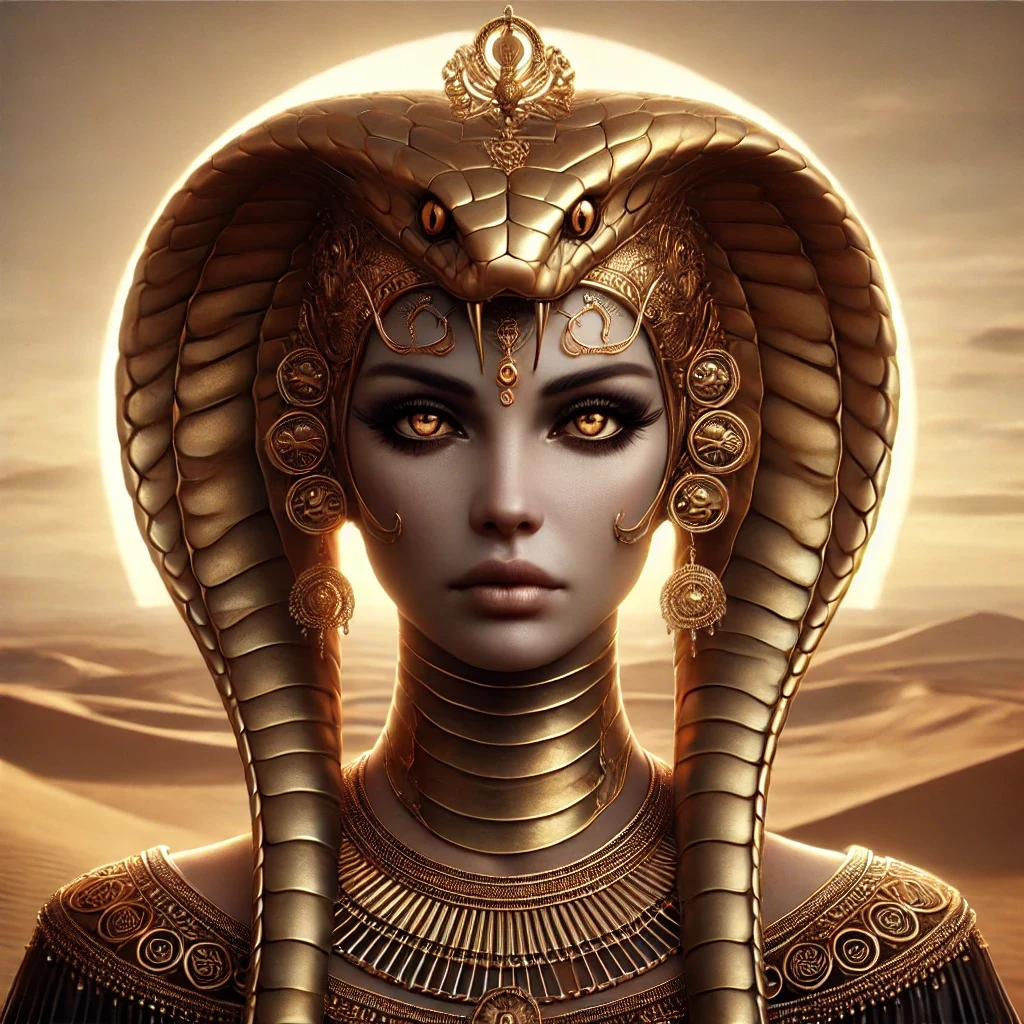Demeter, one of the Twelve Olympians in ancient Greek mythology, is a powerful and revered deity often associated with agriculture, fertility, and the cycle of life and death. Known as the goddess of the harvest, she played a pivotal role in Greek religious practices and storytelling, influencing both the physical and spiritual worlds. This article explores Demeter’s historical background, key myths, symbolism, powers, and worship practices, offering a comprehensive look at her enduring legacy.
Historical & Cultural Background
Demeter’s origins can be traced back to ancient Greece during the Mycenaean period (circa 1600–1100 BCE), where she was venerated as a mother goddess associated with fertility and sustenance. Her name likely derives from the Greek words “De” (earth) and “Meter” (mother), underscoring her role as a life-giving force.
Early Worship
During the Mycenaean era, Demeter’s worship was closely tied to agricultural communities that relied on her blessings for successful harvests. Evidence of her early worship appears in Linear B tablets, where she is referred to as “Da-ma-te.”
Classical Period
In the Classical period (5th–4th century BCE), Demeter’s significance grew as city-states like Athens incorporated her into state-sponsored religious practices. Her cult became formalized, with grand temples and festivals, such as the Eleusinian Mysteries, devoted to her honor.
Myths & Legends
Demeter’s mythology is rich and multifaceted, reflecting themes of love, loss, and renewal. Her stories highlight her role as a nurturing yet formidable goddess.
The Abduction of Persephone
The most famous myth involving Demeter is the abduction of her daughter, Persephone, by Hades, the god of the underworld. Distraught by her daughter’s disappearance, Demeter roamed the earth, neglecting her duties as the goddess of agriculture. As a result, the earth fell into a barren winter. This myth explains the origins of the seasons: Persephone’s return to the surface brings spring and summer, while her time in the underworld marks autumn and winter.
Erysichthon’s Punishment
In another notable tale, Demeter punishes Erysichthon, a mortal who desecrates her sacred grove by cutting down a tree. She curses him with insatiable hunger, leading to his ultimate ruin. This story underscores Demeter’s power and the consequences of disrespecting nature.
Symbolism
Demeter’s symbolism is deeply tied to themes of fertility, growth, and the natural cycles of life.
Agricultural Abundance
Demeter is often depicted with a cornucopia, symbolizing the bounty of the harvest. She represents the earth’s ability to provide sustenance and is a reminder of humanity’s reliance on nature.
Life and Death
The seasonal cycle associated with Demeter and Persephone highlights the connection between life, death, and rebirth, a recurring theme in Greek mythology and religious practices.
Associated Objects, Animals, or Plants
Several sacred items and symbols are closely linked to Demeter, each representing an aspect of her divine role.
Plants
- Wheat and Barley: Central to Demeter’s identity as the goddess of agriculture.
- Poppy: Frequently depicted in her iconography, symbolizing both fertility and sleep.
Animals
- Serpents: Often associated with the mysteries of life and death in Demeter’s cult.
- Pigs: Sacrificed during rituals, particularly in the Eleusinian Mysteries.
Objects
- Cornucopia: The horn of plenty, a symbol of abundance.
- Torch: Representing her search for Persephone and her role as a guide in the dark.
Powers and Attributes
Demeter possesses formidable powers and attributes that distinguish her within the Greek pantheon.
Control Over Agriculture
Demeter’s primary domain is the fertility of the earth. She has the power to bless or curse crops, directly affecting human survival.
Influence on Seasons
Through her emotional states, Demeter governs the seasonal cycle, making her one of the most influential deities in Greek mythology.
Maternal Protector
Demeter’s fierce love for her daughter, Persephone, showcases her maternal qualities, making her a symbol of unconditional love and protection.
Worship Practices & Rituals
Demeter’s worship was integral to ancient Greek religious life, with numerous rituals and festivals dedicated to her.
Eleusinian Mysteries
The Eleusinian Mysteries were secret religious rites held annually in Eleusis, near Athens. These ceremonies celebrated the myth of Demeter and Persephone and promised initiates a blessed afterlife.
Thesmophoria
A women-only festival, Thesmophoria honored Demeter as a goddess of fertility and marriage. Participants engaged in rituals promoting agricultural and human fertility.
Sacrifices
Sacrifices, often of pigs or grains, were common offerings to Demeter, reflecting her agricultural associations.
Connections to Other Deities
Demeter’s relationships within the Greek pantheon highlight her integral role in mythology and religion.
Persephone
As Demeter’s daughter, Persephone is central to her mythology. Their bond is a powerful narrative about love and loss.
Zeus
Demeter shares a complex relationship with Zeus, Persephone’s father, who arranged her marriage to Hades without Demeter’s consent.
Hades
While Hades is often seen as Demeter’s antagonist, their relationship underscores the balance of life and death in Greek mythology.
Interesting Facts & Curiosities
- Demeter’s Roman counterpart is Ceres, from whom the word “cereal” originates.
- The Eleusinian Mysteries were so secretive that initiates were forbidden to speak of them under penalty of death.
- Demeter was sometimes depicted with a chariot pulled by serpents.
- The Homeric Hymn to Demeter is one of the longest and most detailed hymns in Greek literature.
- In some myths, Demeter taught humans how to cultivate crops, making her a culture hero.
- She had an affair with Poseidon, resulting in the birth of Arion, a divine horse.
- The poppy, sacred to Demeter, symbolizes both sleep and fertility.
- Her temple at Eleusis was one of the most important religious sites in ancient Greece.
- The myth of Demeter and Persephone has been interpreted as an allegory for the agricultural cycle.



